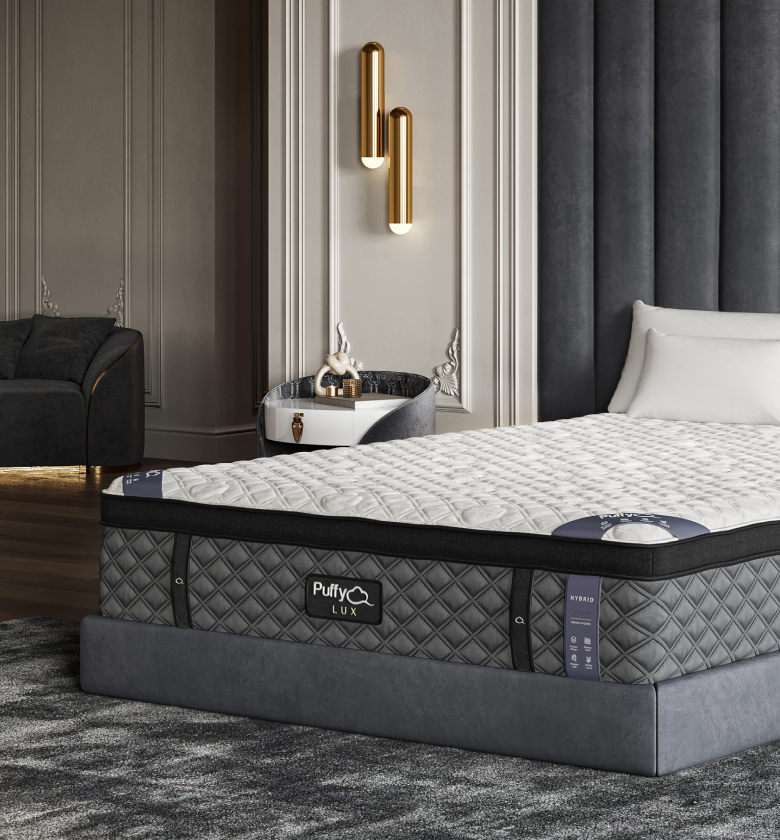Investing in a memory foam mattress is a decision that can significantly impact your sleep quality and overall well-being. Naturally, you want to ensure that your investment is worth it and that your mattress will last for many years.
In this blog post, we'll explore the average lifespan of a memory foam mattress, factors that can affect its longevity, and how often you should consider replacing your mattress to maintain optimal comfort and support.
The Average Lifespan of a Memory Foam Mattress
How Long Do Memory Foam Mattresses Typically Last?
Memory foam mattresses are known for their durability and can last anywhere from 7 to 10 years with proper care and maintenance. However, this lifespan can vary depending on factors such as the foam's density, the mattress's construction, and how well it's cared for.
Foam Density and Mattress Longevity
One of the primary factors affecting a memory foam mattress's lifespan is its density. Higher-density foams tend to be more durable and long-lasting, while lower-density foams may break down more quickly. When shopping for a memory foam mattress, consider the foam's density as an indicator of its potential longevity.
Factors That Can Impact the Lifespan of a Memory Foam Mattress
Usage and Care
How you use and care for your memory foam mattress can significantly impact its lifespan. Regularly rotating your mattress, using a mattress protector, and keeping the mattress clean can all help prolong its life. Conversely, neglecting these practices can lead to premature wear and tear.
Sleep Habits and Body Weight
Your sleep habits and body weight can also play a role in determining how long your memory foam mattress lasts. Heavier individuals or those who spend more time in bed may experience more rapid wear and tear, requiring more frequent mattress replacements.
How Often Should You Replace Your Memory Foam Mattress?
Signs It's Time for a New Mattress
While memory foam mattresses are designed to last for many years, it's essential to recognize the signs that it's time for a replacement. Some indicators that your mattress may be reaching the end of its lifespan include the following:
- Visible sagging or indentations
- Reduced support or comfort
- Increased aches and pains upon waking
- Frequent tossing and turning throughout the night
If you notice any of these signs, it may be time to consider investing in a new memory foam mattress.
Keep an Eye on the Warranty
Another factor to consider when determining when to replace your memory foam mattress is its warranty. Most memory foam mattresses come with warranties that cover 10 years or more. If your mattress is still under warranty and you're experiencing issues, it may be worth contacting the manufacturer to discuss your options.
Tips for Maximizing the Lifespan of Your Memory Foam Mattress
Rotate Your Mattress Regularly
To promote even wear and prevent sagging, rotate your memory foam mattress 180 degrees every three to six months. This practice can help maintain consistent support and comfort across the mattress surface.
Use a Mattress Protector
A waterproof, breathable mattress protector can help shield your memory foam mattress from spills, sweat, and allergens, prolonging its life and maintaining a clean sleep environment.
Clean Your Mattress
Regularly cleaning your memory foam mattress, including vacuuming, spot cleaning, and deodorizing, can help maintain its performance and extend its lifespan.
Conclusion
A memory foam mattress can be a long-lasting investment in your sleep quality and overall well-being, with an average lifespan of 7 to 10 years. However, factors such as foam density, usage, and care can impact how long your mattress lasts.
By recognizing the signs that it's time for a replacement and following best practices for care and maintenance, you can maximize your memory foam mattress's lifespan and enjoy comfortable, supportive sleep for years to come.
Don't settle for subpar sleep – take care of your memory foam mattress and reap the benefits of a restful, rejuvenating night's rest.
Check out what is a memory foam mattress and uncover what makes them so popular.

- Award-Winning Comfort
- Lifetime Warranty
- 101-Night Sleep Trial
- Free Shipping in 1 - 2 Days
- Assembled in USA












